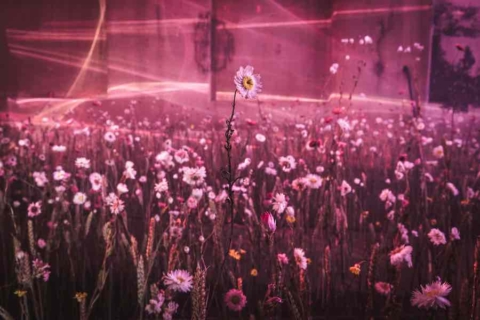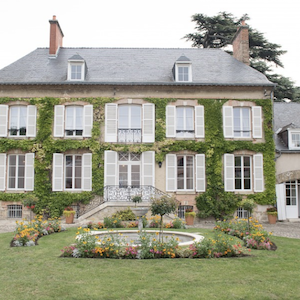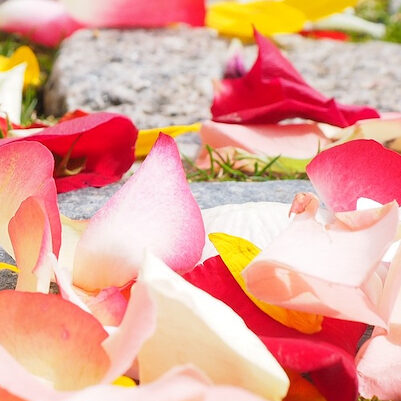News ..A Rather Fashionable Tipple
By Jo Phillips
With the lead-up to LFW talk of Champagne will flow as easily as the bubbly liquid itself..after all no Fashion Week is complete without copious amounts of sparkles being downed..in the most ladylike ways of course. If you feel a need to join in even if just hmm…In Spirit..then why not try a couple of new editions from Moet and Chandon? Also, learn a few insider bits of knowledge courtesy of the brand ambassador Justine Proy.
These are the newest additions to the prestigious Moet&Chandon’s Grand Vintage collection with the Grand Vintage 2008 in Blanc and Rosé. Carefully selected by Benoît Gouez, Moët & Chandon’s chef de cave, ( the cellarmaster, who is typically the person in charge of the winemaking team at a Champagne house. In the past they may have been referred to as a “winemaker”, but in many champagne houses the winemaking team is large, involving multiple winemakers, and the chef de cave is the one who heads the group and provides overall direction. These two unique Grand Vintage come from what was considered an exceptional year in Champagne.

We have been advised that the Grand Vintage 08 Blanc is bursting with floral notes with a fresh, vibrant mouth-watering finish. Whilst its modern counterpart, the Grand Vintage 08 Rosé, is a floral fruity expression and the 41st Moët & Chandon Grand Vintage of its kind.
For the ultimate tasting experience enjoy a trilogy of Moët & Chandon Grand Vintages. The new Grand Vintage 2008 alongside the Grand Vintage 1998 and 1988. Tasted together the rich heritage of Moët & Chandon is brought to life, inviting discovery for each moment in time. Enjoyed side by side over a lunch or dinner, the three champagnes are the ultimate tribute to the masterful creations of Benoît Gouez, who has been part of an unbroken chain of savoir-faire for the past 270 years.
There are 5 champagnes in the Grand Vintage Collection: Grand Vintage 2008, Grand Vintage 2008 Rosé, Grand Vintage 2006, Grand Vintage Collection 1998, Grand Vintage Collection 1999. Champagnes can only be made using an assemblage of Chardonnay, Pinot Noir and Meunier, so each of the champagnes in the Grand Vintage collection has different percentages of these but always include all three. Here is some more information about each of the champagnes:
Moët & Chandon Grand Vintage 2008
Assemblage: Chardonnay: 40% , Pinot Noir: 37% , Meunier 23%.
Ageing time in cellars: 7 Years
Ageing after disgorgement: Minimum of 6 months
Moët & Chandon Grand Vintage Rosé 2008
Assemblage: Pinot Noir: 46% (of which 20% red wine) , Chardonnay: 32% , Meunier: 22%
Ageing time in cellars: 7 Years
Ageing after disgorgement: Minimum of 6 months
Moët & Chandon Grand Vintage 2006
Assemblage: Chardonnay: 42% , Pinot Noir: 39% , Meunier 19%.
Ageing time in cellars: 7 Years
Ageing after disgorgement: Minimum of 6 months
Moët & Chandon Grand Vintage Collection 1998
Assemblage: Chardonnay: 40% , Pinot Noir: 35% , Meunier 25%.
Disgorgement: April-June 2013
Moët & Chandon Grand Vintage Collection 1999
Assemblage: Pinot Noir: 38% , Chardonnay: 31% , Meunier 31%.
Disgorgement: April 2008
Should you not be able to join in the fun at LFW (or Milan and Paris for that matter) raise a glass of something extra special in a toast of all things fabulous and fashionable! In the meantime, if you are interested in finding out a little bit more about the art of champagne then continue reading as we have interviewed brand ambassador Justine Proy to tell us more…
What is the difference between a champagne that is a blend of grapes, and a champagne that is say only one or two grape varieties?
There are three grape varieties that one can find in champagne – Chardonnay, Pinot Noir and Meunier – and each variety brings something different. Moët & Chandon’s vision is to represent the Champagne region and the diversity in its vineyards. As a result, the three grape varieties are always present in all Moët & Chandon champagnes: Pinot Noir for its body, Chardonnay for its freshness, and Meunier for its suppleness. You can also find some champagnes that are a blend of only Chardonnay (called “Blanc de blancs”) or Pinot Noir and Meunier (called “Blanc de Noirs”).
What is the oldest bottle of champagne that Moët has in their cellars?
Winemaking savoir-faire is at the core of Moët & Chandon’s heritage. It has been producing champagnes that seduce and delight since it was first founded in 1743. As a result, Moët & Chandon has a spectacular variety of wines in the cellars dating back centuries. The oldest bottle of champagne that Moët & Chandon has in the cellars dates to the year 1869. The oldest rosé champagne dates back to 1878.
Not all grapes that are potential for a Vintage will make the grade – what happens to these if they don’t? Can we have a little technical information on how grapes ‘make the grade’?
At Moët & Chandon, most grapes are used for the non-vintage range – approximately 95% of grapes.
Moët & Chandon Grand Vintage champagnes are based on the concept of creative freedom. Our Chef de Cave, Benoît Gouez is encouraged to create a distinctively mature, complex, assertive champagne with an individual personality, based on the year and selection of grapes. For a year to be considered as a vintage year, the grapes at harvest time and the wines selected for the assemblage must have met the conditions to declare a vintage; meaning that they have a sufficiently high level of maturity, a perfect state of health, and an aromatic and flavour character that is original and distinctive.
Now finally, if you really want to show off your knowledge about Moët & Chandon then you should know this… Many believe that Moët is pronounced with a silent T, but in actual fact, Mr Moët was Dutch not French, hence the emphasis on the letter T!
You can find out more information about Moët & Chandon, then you can visit their site, here.






